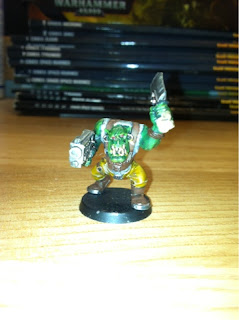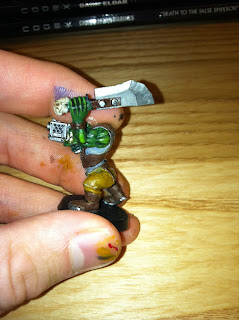Warhammer 40k Tactica
So, you have amassed an 40k army, and played a few games with it. Yet, you are struggling against some of the more experienced players. How do you step up your game? How do you make an army list that is competitive? Hopefully this post will allow you to make that next step.
Each army has a many, many different units to chose from, but some of them are... awful. Others are ok, and there are some that can be a foundation for a great army. Usually, when regarding the usefulness of a unit, it will be referred to as:
-"Competitive"- This unit performs well for it's intended purpose, whatever that may be. It's positives outweigh it's negatives, and it is a unit that can perform well in tournaments if used correctly.
-"Semi-Competitive"- This unit may perform well against certain armies, but poorly against others. While not as good overall as "competitive" units, they may be useful in tournaments.
-"Casual"- This unit will probably not contribute positively to your army. It could be too expensive, too weak, or have too many negative special abilities. It also may be that there is an alternative unit that performs similarly, that is cheaper or stronger. These units should only be taken in special circumstances, like when playing against close friends.
Sometimes determining what category a given unit falls into is relatively easy- like when you can tell it is complete garbage or super awesome. Other times, it takes several games, putting that unit in situations to prove it's worth, for it to be correctly categorized. You should also note that these are only opinions, and depending on how you use that unit tactically, your evaluation can differ from those given by other players.
Creating a unit breakdown of everything in a given codex takes a lot of hard work, experience and knowledge. For a single codex, this could take weeks/months of playing games and analyzing outcomes. Therefore, I will be creating a list of Tactical articles that I have found and deemed acceptable. Here they are:
Grey Knights Tactica
Imperial Guard Tactica
Chaos Space Marine Tactica (not completely finished, but still very good)
Dark Eldar Tactica
Necron Tactica
Space Marine Tactica
Tyranids Tactica
Oks Tactica
Sisters of Battle Tactica
Tau Tactica (Only goes over changes since 5th edition)
Dark Angels Tactica
Most of the above links are from DakkaDakka. If I could not find decent ones there, I searched elsewhere. Some of the newest 6th Edition codexes aren't up here (Daemons, Dark Angels, Eldar) because they are so recent, nobody has had the time to write up a decent tactica for them yet. I will post they as they are available.
These articles are an invaluable resource. I highly recommend reading the one for your army, and the others if you have the time. It's in the same category as reading the codexes for the other armies: Basically, know your enemy.
These tactica serve another important purpose: knowing which models to buy. Instead of buying every model for the whole army (which would cost a fortune), you can create two or three competitive army lists with different specialities. Using those lists, you can then buy only the models needed to create them (saving you a bundle). It also saves you the time and effort of painting those models that will never be a sucessful part of your army.
I hope this has been very helpful to you all. Be sure to comment with suggestions, corrections, or other random tidbits of information.






























